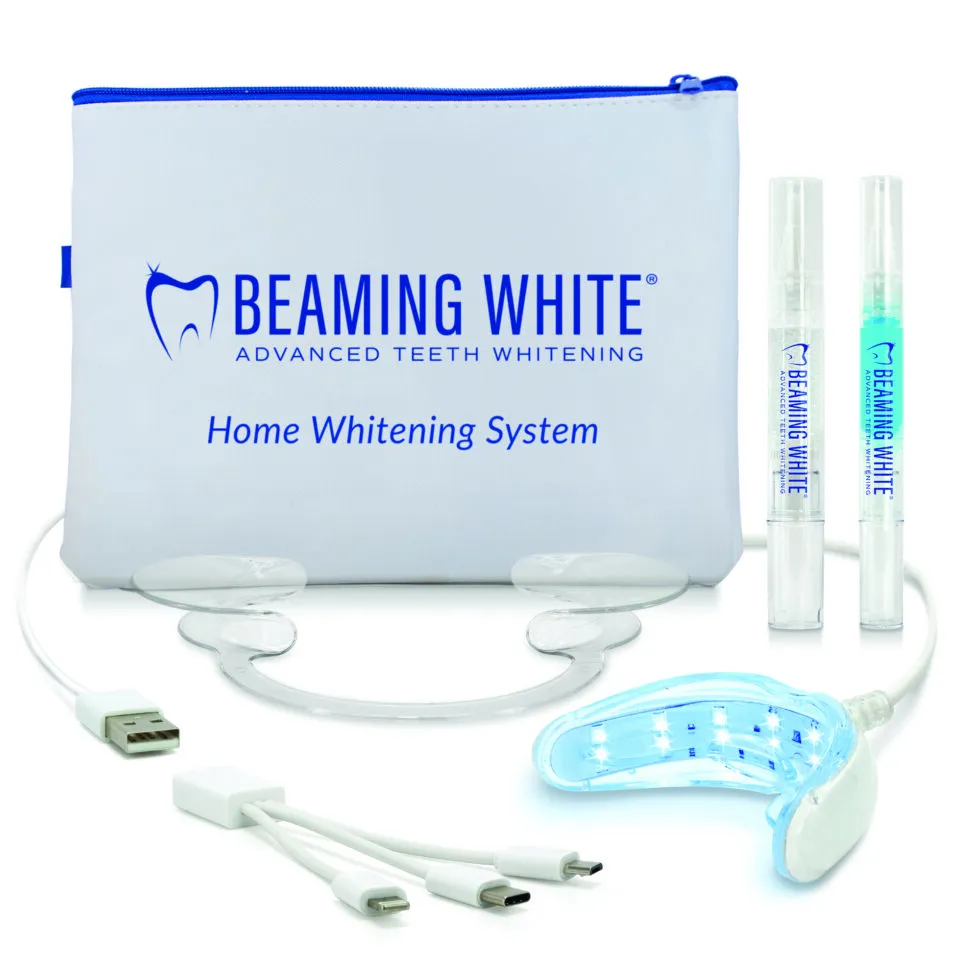Understanding Home Teeth Whitening
Achieving a brighter, more confident smile is a goal for many, and home teeth whitening kits offer a convenient and affordable solution. These kits utilize various methods to remove stains and discoloration from the surface of your teeth, resulting in a noticeably whiter appearance. Home whitening is a popular choice for those seeking to enhance their smile without the higher costs and time commitment of professional treatments. The effectiveness of these kits can vary based on the type of product used, the severity of the staining, and individual tooth characteristics, but with proper use, significant improvements are often achievable.
How Does Home Teeth Whitening Work?
Home teeth whitening kits typically use bleaching agents, most commonly hydrogen peroxide or carbamide peroxide, to lighten the color of your teeth. These agents penetrate the enamel and dentin layers, breaking down the stain molecules that cause discoloration. The process effectively reduces both extrinsic stains, those on the surface caused by food, drinks, and smoking, and intrinsic stains, those within the tooth structure. The concentration of the bleaching agent, the duration of application, and the frequency of use all influence the whitening results. It is essential to follow the instructions provided with your chosen kit to ensure safe and effective whitening.
Types of Home Whitening Kits
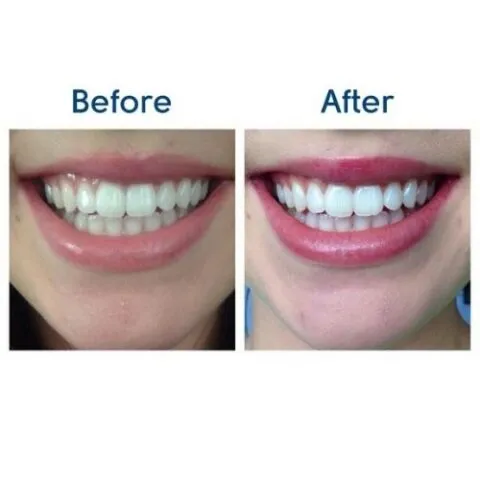
Home teeth whitening kits come in several forms, each with its own application method and level of convenience. Understanding the different types of kits available allows you to choose the one best suited to your lifestyle and needs. The key is to consider ease of use, the potential for sensitivity, and the expected results when making your selection. Reviewing product details and consulting with a dentist can further help in making an informed decision for achieving that radiant smile you desire.
Whitening Strips
Whitening strips are thin, flexible plastic strips coated with a peroxide-based whitening agent. They are applied directly to the teeth, adhering to the tooth surface and delivering the whitening agent. Strips are easy to use and readily available, making them a popular choice for those seeking convenience. Treatment typically involves wearing the strips for a set amount of time each day, often 30 minutes, for a period ranging from a few days to several weeks, as indicated by the product instructions. The simplicity and portability of whitening strips make them a great option for whitening on the go.
Whitening Gels
Whitening gels are applied directly to the teeth, usually with a small brush or applicator. The gel is designed to adhere to the tooth surface, where it then releases the bleaching agent. Gels can be used alone or in conjunction with a tray system. Depending on the product, application may be done once or twice a day for a specified duration. Whitening gels offer a flexible approach, as they can be used on specific teeth, targeting areas of concern. Carefully follow the product guidelines for best results and to mitigate potential sensitivity.
Whitening Toothpaste
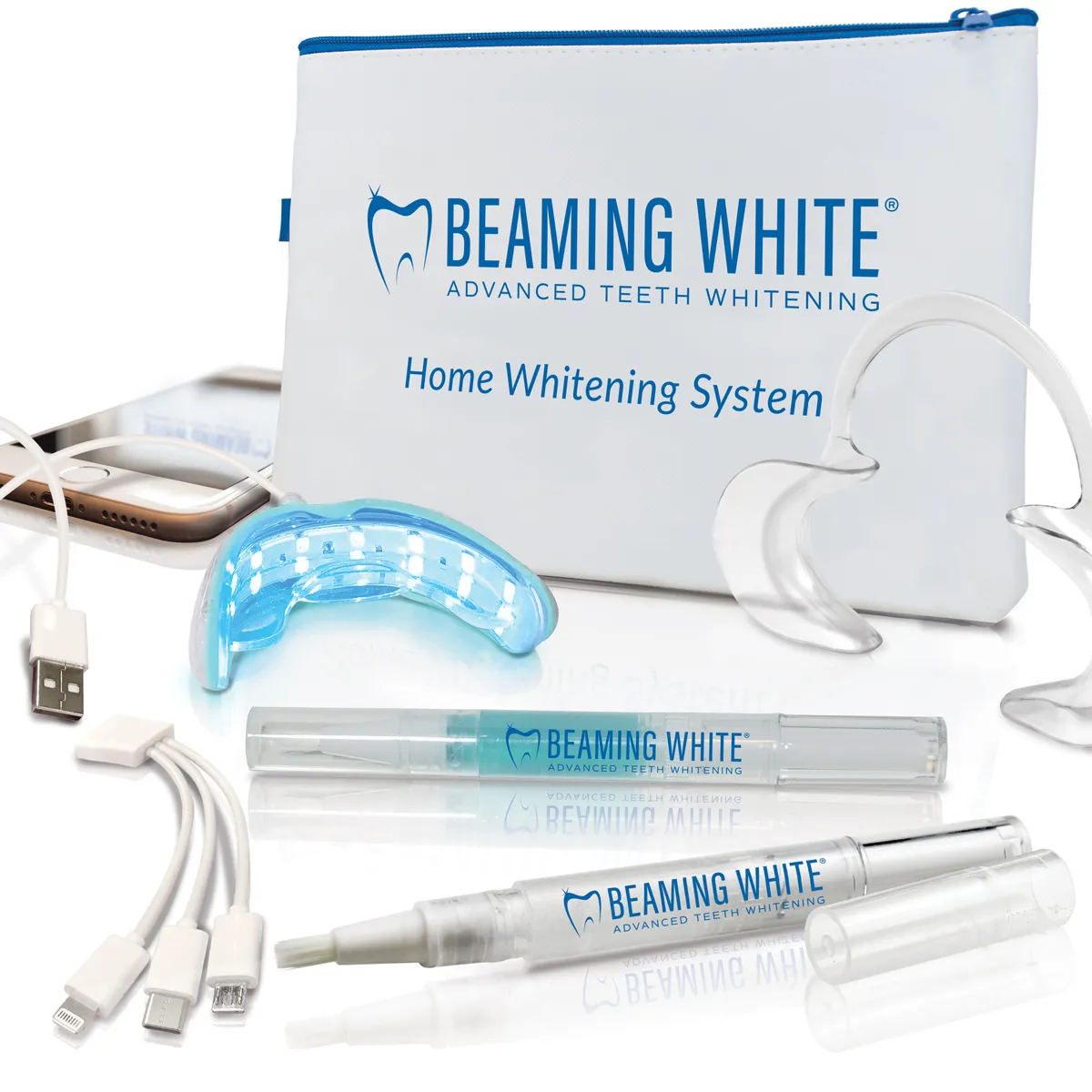
Whitening toothpastes contain mild abrasives and/or chemical agents that help remove surface stains. They are typically used in place of regular toothpaste. While whitening toothpastes can help maintain brightness and remove surface stains, they often do not provide the same level of whitening as strips or gels containing higher concentrations of bleaching agents. They are best used as part of an overall oral care routine to maintain a bright smile. Continued use and a good oral hygiene will support your teeth whitening goals.
Custom Tray Systems
Custom tray systems involve creating a custom-fitted tray from impressions of your teeth, often obtained from your dentist. The tray is filled with a whitening gel and worn for a specified time, usually at night or for a few hours during the day. This method provides a more even whitening effect, as the trays ensure all surfaces of the teeth are exposed to the whitening agent. Custom tray systems offer the advantage of a more controlled whitening experience, minimizing the risk of gum irritation and ensuring maximum effectiveness. Your dentist will provide guidance and instructions on this more advanced technique.
Choosing the Right Home Whitening Kit
Selecting the right home teeth whitening kit involves careful consideration of several factors to ensure the best results and a positive experience. Thinking through your needs and understanding the product options available will help you choose a kit that aligns with your preferences and oral health. Evaluate the ingredients to ensure the product is safe and suitable for your teeth, and always address any concerns about sensitivity with your dentist. The perfect kit will support your journey to a brighter, more confident smile.
Consider Your Needs and Goals
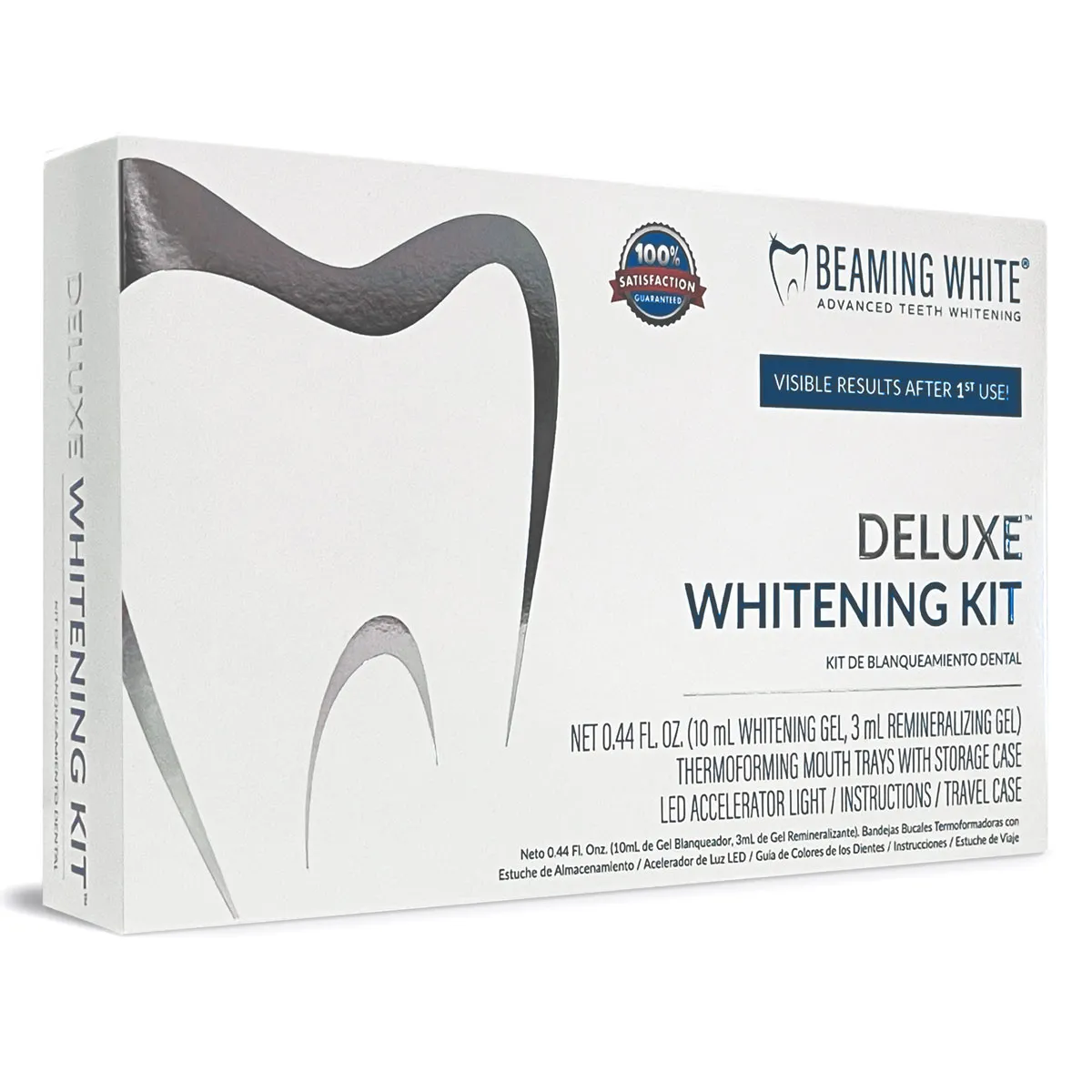
Before choosing a kit, think about your specific whitening goals. Do you need to remove minor surface stains, or are you looking for a more dramatic whitening effect? Your existing oral health also plays a role. If you have sensitive teeth or gums, a milder formula may be best. Consider your lifestyle and the ease of use of different kits, to find a product that fits seamlessly into your daily routine. Assessing your personal needs will guide you towards the right whitening kit, leading to the results you want.
Evaluate the Ingredients
Carefully review the ingredients list of any home whitening kit you consider. The active ingredient is usually hydrogen peroxide or carbamide peroxide, which is safe and effective when used as directed. The concentration of the peroxide will impact the whitening strength, with higher concentrations potentially leading to faster results but also an increased risk of sensitivity. Be mindful of any other ingredients that may cause allergies or sensitivities. Opting for products with reputable formulations will support safe and effective whitening results.
Check for Sensitivity
If you have sensitive teeth, choose a whitening kit formulated for sensitive teeth. These kits often contain a lower concentration of the active ingredient, or they include ingredients like potassium nitrate, which helps to reduce sensitivity. Before starting any whitening treatment, consult with your dentist to determine whether your teeth are suitable for whitening. They can provide guidance and recommend products that minimize discomfort and promote the best results for your oral health.
How to Use a Home Teeth Whitening Kit
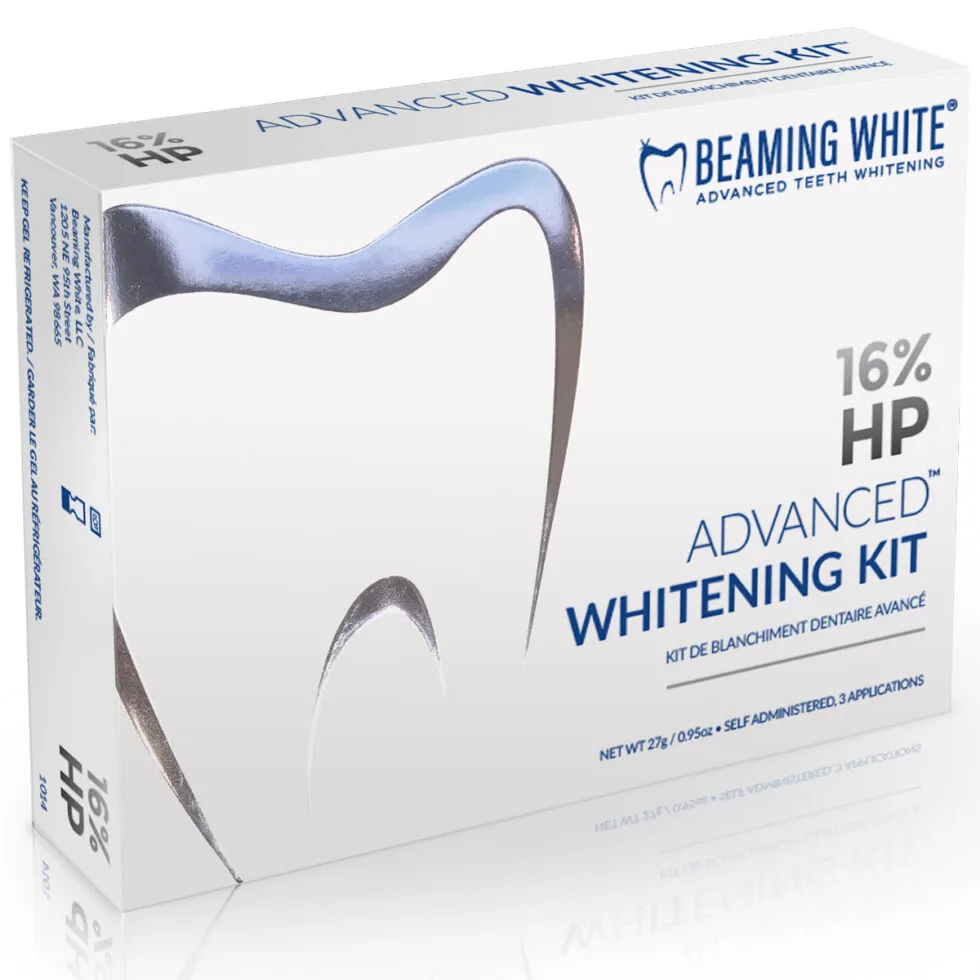
Following the instructions on your chosen home teeth whitening kit is essential for achieving optimal results and minimizing potential side effects. Each kit has its own specific procedures, so carefully review the directions before beginning. Consider the preparation steps, how to apply the product, and the necessary maintenance activities. Careful and consistent usage will ensure the best results and will lead to a more beautiful, whiter smile.
Preparation
Before applying any whitening product, brush and floss your teeth thoroughly to remove any food particles or debris. Make sure your teeth are dry before applying whitening strips or gel. This helps the product adhere to the tooth surface and enhances its effectiveness. Always read and follow the specific preparation instructions outlined in the kit to maximize the whitening effects and to ensure safe usage. Proper preparation sets the stage for effective and comfortable whitening.
Application
Follow the instructions of the specific product for application. With whitening strips, apply the strips evenly to your teeth, pressing gently to ensure they adhere properly. When using gels with a tray system, apply the correct amount of gel to the tray and insert the tray into your mouth. For gels without a tray, use the applicator to apply the gel to the teeth. Wear the strips or tray for the recommended time frame, following the instructions carefully. Avoid eating or drinking while the product is in use to maximize its effect.
Maintenance
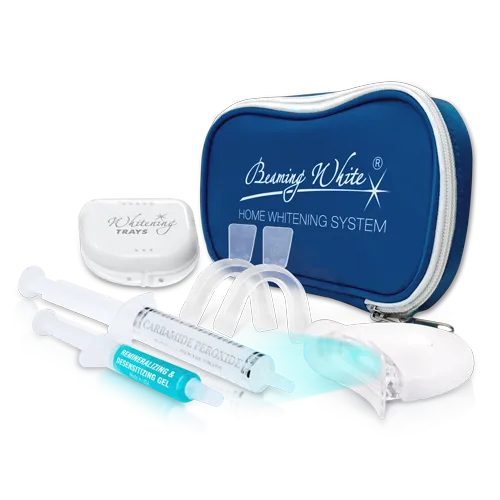
After the recommended treatment time, remove the strips or tray and rinse your mouth thoroughly with water. Avoid eating or drinking staining foods and beverages for at least an hour after each treatment. Maintain a consistent oral hygiene routine of brushing twice a day and flossing once a day. To maintain your bright smile, consider periodic touch-up treatments as needed, following the product instructions. This will help you keep your teeth sparkling white.
Maximizing Results for a Brighter Smile
To get the most out of your home teeth whitening kit, integrate some simple practices into your daily routine. Minimizing stain-causing foods and drinks will improve your results, and consistent oral hygiene will keep your smile bright. Regular dental check-ups will support your teeth whitening goals. These practices will help maintain your bright, beaming smile and promote overall oral health.
Avoid Staining Foods and Drinks
Certain foods and drinks can stain your teeth, counteracting the effects of whitening treatments. Minimize consumption of dark-colored beverages such as coffee, tea, and red wine. Avoid or limit the intake of foods like berries, soy sauce, and curries. These foods and drinks contain pigments that can cause staining, so reducing them will help maintain your brightened smile. Making smart choices about what you eat and drink will extend the positive effects of your whitening treatment.
Practice Good Oral Hygiene
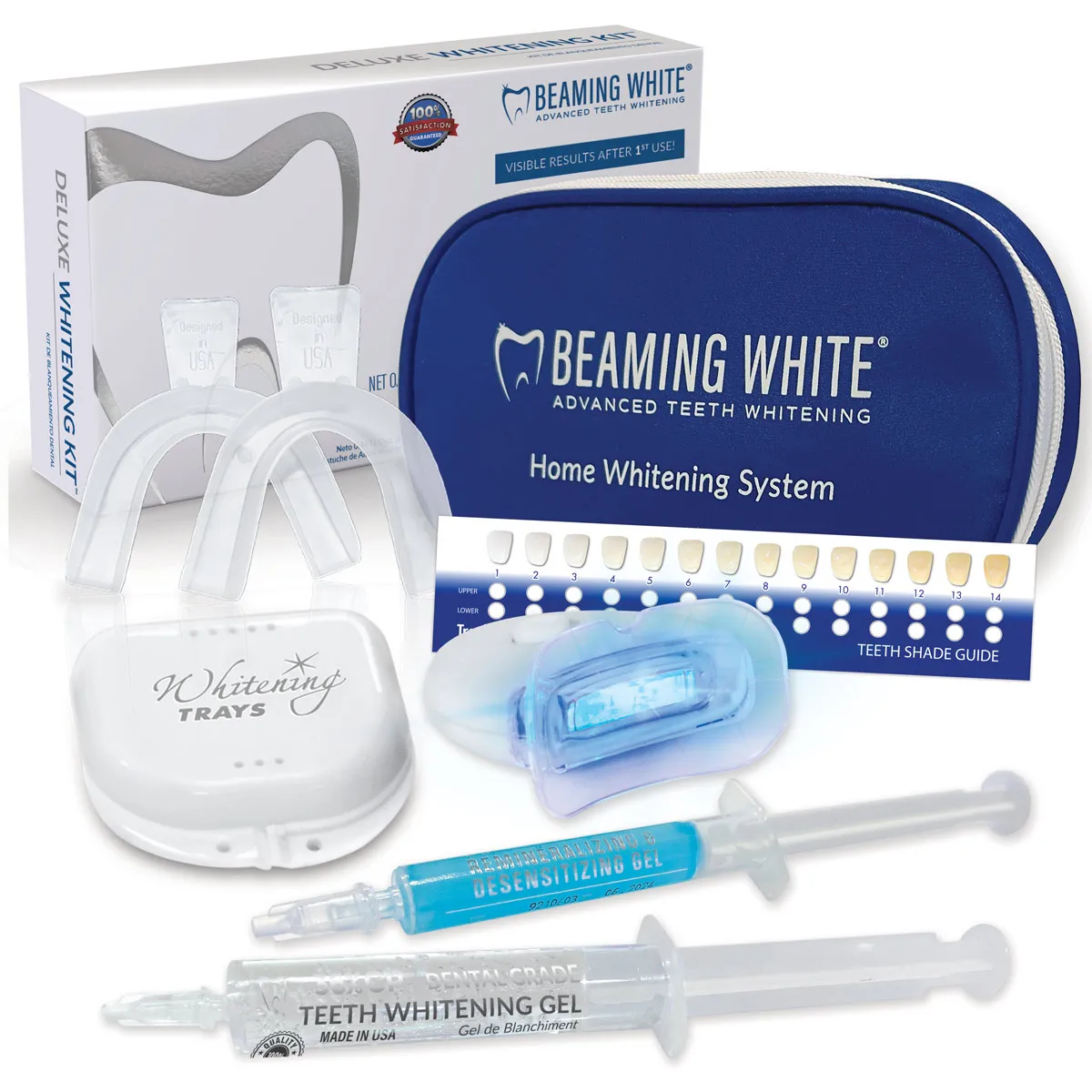
Maintain a rigorous oral hygiene routine to keep your teeth clean and white. Brush your teeth at least twice a day with a whitening toothpaste to remove surface stains. Floss daily to remove plaque and food particles from between your teeth. Using a mouthwash can further remove bacteria and keep your breath fresh. Proper oral hygiene is essential for maintaining a bright and healthy smile and will support the efforts of your whitening kit.
Maintain Regular Dental Check-ups
Visit your dentist for regular check-ups and professional cleanings. During these visits, your dentist can identify and address any potential oral health issues. Professional cleanings remove plaque and tartar buildup that can contribute to discoloration. Your dentist can also provide personalized advice to enhance your whitening efforts and maintain the health of your teeth and gums. Regular check-ups are vital for a healthy, bright smile.
Potential Risks and Side Effects
While home teeth whitening kits are generally safe, it’s important to be aware of potential risks and side effects. If you’re informed of the potential issues, you can take steps to mitigate these risks and minimize any discomfort. In all cases, contact your dentist for advice and guidance.
Sensitivity
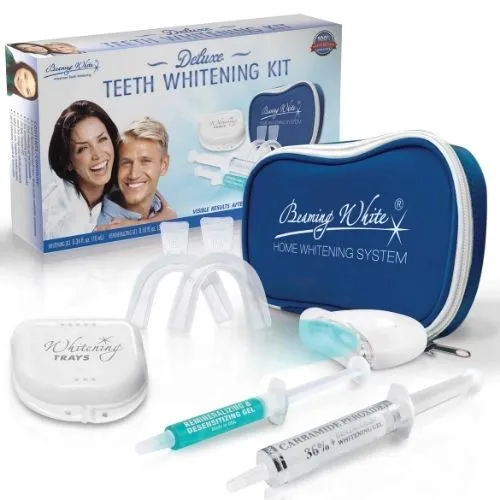
Teeth sensitivity is a common side effect of teeth whitening treatments. It occurs when the whitening agents penetrate the enamel and irritate the nerves in your teeth. This sensitivity is typically temporary, resolving within a few days after treatment. Using a toothpaste designed for sensitive teeth, or limiting the duration of treatment, can help reduce this discomfort. In severe cases, consult with your dentist to discuss options such as fluoride treatments or other desensitizing agents.
Gum Irritation
Gum irritation is another possible side effect, often caused by the whitening agent coming into contact with gum tissue. This can result in redness, swelling, and discomfort. To reduce gum irritation, ensure the product does not touch your gums during application. If you use a tray system, make sure the tray fits properly to avoid any leakage of the whitening gel onto your gums. If irritation persists, consult your dentist. They may advise on using a lower concentration of whitening agent or adjusting your application technique.
Enamel Damage
Enamel damage from home teeth whitening is rare when the products are used as directed. However, excessive use or using products with high concentrations of bleaching agents can potentially damage the enamel, causing the teeth to become more porous and prone to staining. Following the instructions carefully is key to minimizing any risk of damage. Consult your dentist if you experience any adverse effects or have concerns about the safety of your chosen whitening kit.
